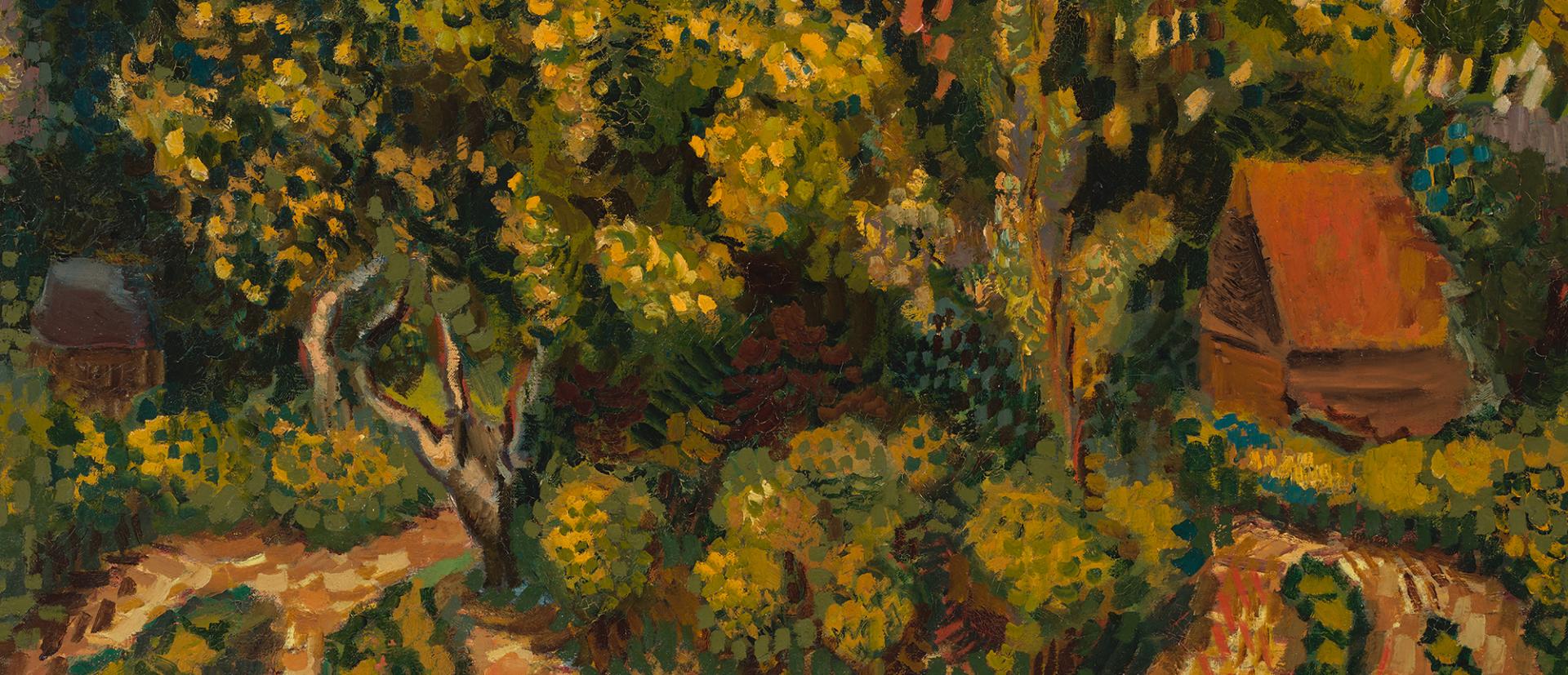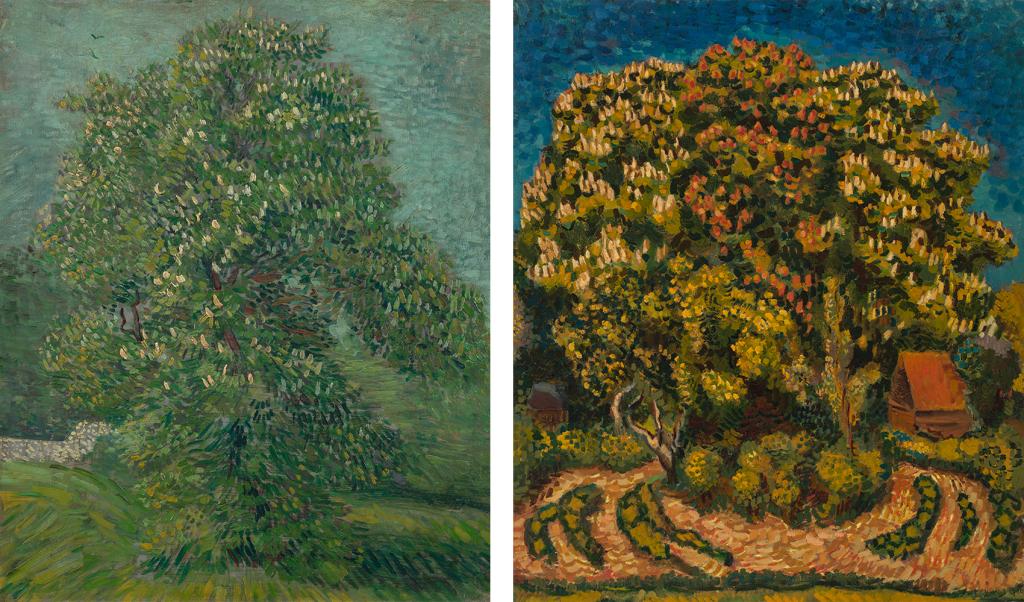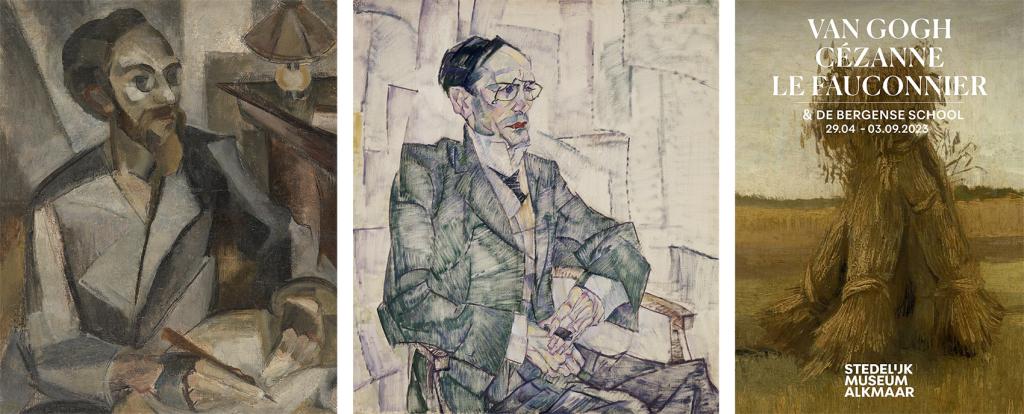The inspirations of the Bergen School

Last week the Stedelijk Museum Alkmaar opened the exhibition Van Gogh, Cézanne, Le Fauconnier & the Bergen School, focusing on the origins of this very first expressionist art movement in the Netherlands. Curator Marjan van Heteren compiled the accompanying exhibition catalogue together with Chris Stolwijk, General director of the RKD.
The Bergen School
At the end of the nineteenth century, the visual arts in our surrounding countries, especially in France, were dominated by radical innovation. The Netherlands first caught on to these developments around 1900, when a few progressive artists organized international exhibitions and brought artistic innovations to our country. For some young artists, the exhibitions of works by Vincent van Gogh (1905), Paul Cézanne (1909) and Henri Le Fauconnier (1911) in particular made an irresistible impression. Partly under their influence, the Bergen School emerged in Bergen around 1915.

2. Jaap Weyand, Flowering Chestnut, 1916, collection Stedelijk Museum Alkmaar
Exhibition
The work of the artists of the Bergen School is characterized by an alternately dark and expressive colour palette and a cubistic use of form. The exhibition presents works by Bergen School artists such as Leo Gestel, Gerrit Willem van Blaaderen and Else Berg alongside the works of Van Gogh, Cézanne and Le Fauconnier that were on display in the Netherlands at the beginning of the twentieth century and were a model of innovation. In this way, the Bergen School is placed in an international context.
Sources of inspiration
The catalogue takes a closer look at the painters mentioned, who served as sources of inspiration for the artists of the Bergen School. For example, Stolwijk discusses the reception of Vincent van Gogh in the period 1888-1920. He describes how in the decades following his death Van Gogh was able to grow from an ‘isolated’ artist, who initially enjoyed fame only in more insider cultural circles, into one of the most internationally acclaimed pioneers of modern art. Special attention will be given to Van Gogh's exemplary role as an authentic and unconventional artist for the young painters of the Bergen School.
In her contribution, RKD-curator Anita Hopmans analyses Henri Le Fauconnier's breakthrough as a leader of the Cubist innovation at the modern Salons in Paris. The outbreak of World War I forced the French painter to stay in the Netherlands for about six years. Le Fauconnier established an extensive (artist)network during this period. Partly thanks to this stay, he was able to become ‘the connector’ between – mainly – Parisian, Cubist art views and the avant-gardists in the Netherlands. Thus, Le Fauconnier inspired several artists, now considered part of the Bergen School, to follow a 'moderate' expressionism and explore a new style of painting.
The exhibition Van Gogh, Cézanne, Le Fauconnier & the Bergen School is on view at the Stedelijk Museum Alkmaar until September 3, 2023. The catalogue Van Gogh, Cézanne, Le Fauconnier & the Bergen School is published by Waanders and can be ordered at www.waanders.nl.

2. Leo Gestel, The poet Jac. Rensburg, 1913, collection Stedelijk Museum Amsterdam
3. The exhibition Van Gogh, Cézanne, Le Fauconnier & the Bergen School at the Stedelijk Museum Alkmaar